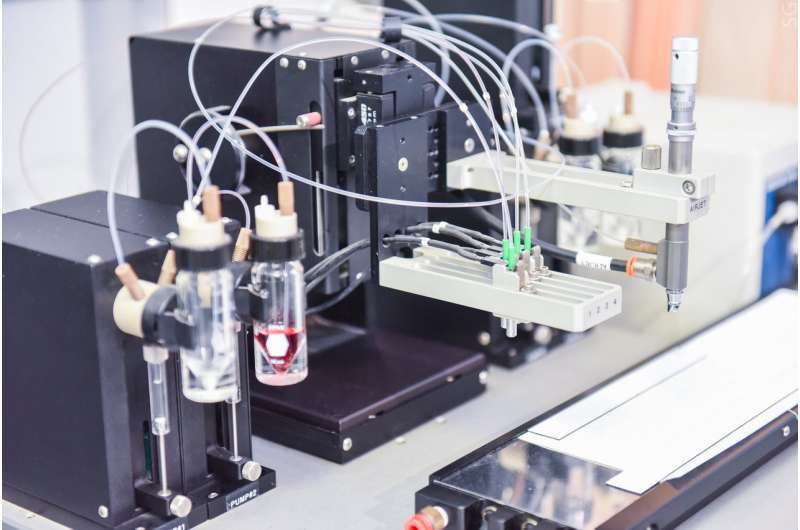Rapid tests for early heart attack diagnosis and sepsis identification

NUST MISIS scientists have developed a new type of membrane test strip for a quantitative immunochromatographic rapid test for early diagnosis of acute myocardial infarction via disease markers in blood, as well as to identify such conditions as sepsis, pregnancy, and viral and bacterial infections.
Tests based on immunochromatography, such as pregnancy tests, are extremely easy to use. They are based on the detection of individual substances in biological liquids and the visualization of their presence in the form of coloring or fluorescence on a test strip based on the "yes-no" principle.
Usually, to obtain quantitative results and make a diagnosis, it is necessary to use special portable tools, such as a reflecting photometer, to register the intensity of coloring in the test zone. Rapid diagnosis is vital for immediate treatment in cases of serious heart attack, sepsis and malignant transformations.
The science team, led by Alexander Osipov at the NUST MISIS, combined qualitative and quantitative immunochromatographic test principles in a simple and effective bioanalytical system, thus improving the quality and accuracy of their results. Team leader Alexander Osipov at the NUST MISIS said, "We have improved the technology used for rapid testing. It is now possible to not only identify the presence of certain substances in the body but also to determine their critical number visually. To get a quantitative result, it is necessary to apply one or several drops of a biosample to the test strip and count the number of colored test lines appearing in the device's analytical area."
"Biological samples flow on the test strip segment that contains a conjugate labeled with gold nanoparticles or quantum dots of antibodies. Then the test strip captures the sample and moves with it along an analytical membrane. The resulting immunocomplexes move along several cross lines containing a second set of antibodies against the defined antigens in increasing concentrations. The binding of labeled immunocomplexes on the carrier, which is visually registered as forms of colored cross lines on the test strip, occur due to the specific interactions of antibody and antigen. The higher the content of the determining substance in the sample, the greater the number of lines that will appear in the analytical area. Using this approach to analyze things like human chorionic gonadotropin in urine allows responders to determine not only the presence, but also the stage of a pregnancy," Osipov explained.
"The use of new types of nanosize gold particles or quantum dots in conjugates with antibodies allows us to significantly increase the detection limit of analyzed substances in biological fluids. This is fundamentally important in the analysis of the markers of a number of deadly diseases. For example, we can see these processes at work using procalcitonin to detect sepsis.
"Monitoring fatty-acid-binding proteins (FABP) is the most promising way to diagnose early heart attacks. When the heart is damaged, the concentration of FABPs in the blood increases significantly in the first hours after symptoms appear. The simultaneous determination of early FABP and late cardiac markers with the use of our new type of rapid-test increases the efficiency of diagnoses and allows doctors to identify hidden forms of heart attacks," he concluded. The method can be applied in an ambulance or even at home. A batch of experimental test samples is currently undergoing pre-clinical trials.
More information: J.V. Samsonova et al, Pretreatment-free lateral flow enzyme immunoassay for progesterone detection in whole cows' milk, Talanta (2014). DOI: 10.1016/j.talanta.2014.10.043
Provided by National University of Science and Technology MISIS



















